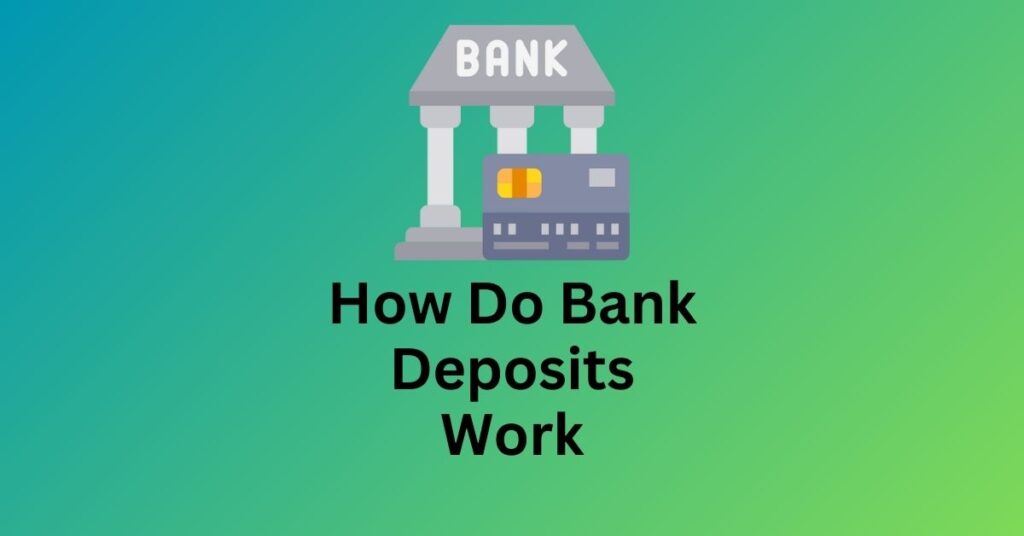
If you have to deposit money in your bank account from a paycheck directly or to carry a jarful of pennies into the bank, do you know exactly what bank deposits are? In this article, we will know after depositing money what happens to them and also how we can take it out when you require it. It is not a very easy and simple process therefore we have to discuss everything in detail and in simple language.
What Are Bank Deposits?
When you put our money into our bank account at any financial institution, especially in a bank, indirectly we give the institution use of our money to make loans in place of its promise to pay you back whenever we need it. Bank makes money on this arrangement by charging a higher interest rate on the loans it makes. In comparison, the bank pays you interest on the money in your account is lower than it charges on the loan given.
Bank deposits are assets for the depositor because deposits represent money that’s owed to them. The deposits are the responsibility of the bank. This is because they show money the bank must return whenever the depositors require it. Check our previously published article on How To Open a U.S. Bank Account?
Below, just two major types of bank deposits are given:
- Demand deposit: In a demand deposit account,we can withdraw our money on demand, whenever we want to. It means that we don’t lose access to it even if the bank borrows it to make loans.
- Time deposit: In a time deposit account, the deposited amount must stay in the account for a particular period of time. We can’t withdraw money during that period.
Understanding the Types of Bank Deposits
There are some types of bank deposits. Depending on the type of bank deposits are treated a little differently. Let’s have a glance at the various types of bank deposit accounts that are present and how each handles deposits.
Checking Accounts
A checking account is also called a current account, in some places of the world as a demand deposit account. All checking accounts do not pay interest. Some may pay and some may not.
We can take out money from checking account by using various methods,some are given as follows:
- Visit your nearest bank to take out money using a withdrawal slip.
- Write a check on your name or to someone else. When the bank gets that check, it gives the money to the person whose name is written on the check.
- Use your debit card at an ATM.
Note: Checking accounts aren’t the only one that enables you to write checks. You can also prepare checks on money market accounts, home equity lines of credit and other credit line accounts. Don’t miss out! Check our previously published article on Why Banks Require a Minimum Balance?
Savings Accounts
A savings account is a demand account that typically earns interest. When you put your money into a savings account, you earn interest depending on the balance in the account per day, and the interest will be sent to your account each month. Savings accounts are basically used to save money for a rainy day or for the purpose of long-term saving.
Before this year, In a statement period, we can only withdraw money up to six times. As the federal law restricts the number of convenience withdrawals from your savings account. But last year, the Federal Reserve suspended restrictions that are still permitted to imply it.
Certificates of Deposit
A certificate of deposit, popularly known as CD is a time deposit account. When we open a CD account, we choose a time period telling how long we will keep the money on deposit at that particular bank. Money kept in this type of account, usually earns a higher rate of interest. This is because in this account we put our money for a longer period of time.
On the date of maturity, that means the end of the time period, the bank gives the money along with the amount of interest earned, agreed to when you opened the account back. The bank will impose a penalty on you, if you withdraw the money before the end of the time period or maturity date. Make sure to check our previously published article on How To Open an Ally Bank Account?
Money Market Accounts
A money market account is a type of deposit account that can be used as a savings account with a restricted number of check writing and debit card entitlement. The main advantage of a money market account is that it gives a higher rate of interest than a general savings account. Despite the fact that, your bank might restrict you up to only six withdrawals or checks each month, ATM, in-person and digital transactions from phone are usually not included.
Frequently Asked Questions
People put their funds in their banks; the bank lends the fund in car loans, credit cards, and business loans. The recipients that had borrowed that fund spend the money, the bank earns higher interest on the loans, and the process keeps money moving throughout the system.
Payments through Credit card and debit are common in the United States. Because it helps us in contactless transactions.
Conclusion
It doesn’t really matter if you visit a branch or use digital banking, bank deposits are a very good method to keep your money safe, secure and earn a little interest. By putting your money in the bank, you can withdraw it anytime whenever you want to. Also check: How Much Wells Fargo ATM Fees Cost?